The Understanding the Needs of the Chronically Ill, Acutely Ill Patient course will educate healthcare providers (HCP) on how to develop a holistic approach to acute illness monitoring, treatment, and subsequent recovery.
Chronic diseases are conditions that require extensive medical attention and/or can limit daily functioning and activities. Heart disease and cancer are chronic diseases, and they also are the leading causes of disability and death.
In the U.S., chronic diseases make up nearly $3.8 trillion in annual healthcare costs. Chronic illnesses are long-term conditions, and they may be incurable.
What You’ll Learn
- Overview of chronic diseases
- Causes of chronic diseases
- Examples of common chronic diseases
- How to assess and monitor chronic diseases
- Discussing decisions with chronically ill patients
Details
Course length: 1 hour; CME 1.00
Languages: American English
Key features: Audio narration, learning activity, and post-assessment
Get Certified
American Medical Compliance (AMC) is a leader in the industry for compliance, Billing, and HR solutions. To become certified, please visit us at American Medical Compliance (AMC).
Explore our other courses by visiting the AMC Course Library.
Causes of Chronic Diseases
Risky behaviors can cause several chronic diseases. One such risk factor for chronic illness is tobacco. Tobacco use is currently the leading cause of preventable disease and illness in the United States.
Additionally, poor nutrition can cause chronic illness. Good nutrition is essential for a healthy and long lifespan. When one does not follow a healthy diet, they are at a higher risk for developing chronic diseases, such as obesity.
Serious Chronic Diseases
Heart disease and stroke are examples of severe chronic diseases. Nearly 900,000 Americans die of heart disease or stroke every year, accounting for nearly 1/3 of all deaths in the United States. A major risk factor for heart disease and stroke is high blood pressure. High blood pressure damages the lining of the arteries, causing plaque to build up. Additionally, cancer is a very serious chronic disease. In the United States, nearly 2 million people receive a cancer diagnosis annually. It is also the second leading cause of death. Smoking and secondhand smoke are typically the cause of lung cancer, which can lead to death. Smoking can also cause other forms of cancer, including mouth, kidney, and colon cancer.
Assessing and Monitoring Chronic Diseases
The care of acutely ill patients requires critical care input and initial assessments. These assessments should at the minimum measure heart rate, respiratory rate, blood pressure, and other important factors.
Healthcare providers can use physiological track and trigger systems to monitor patients and their symptoms. Physiological observations should be made at least every 12 hours unless senior-level management makes an individual exception. Healthcare workers must define the parameters of the physiological responses being measured as well as note the frequency of these observations. For more information on how to assess and monitor chronic diseases, please refer to this course.
Needs of Chronically Ill Patients
People suffering from chronic illness may have unique needs and challenges involving paying for care or navigating the health care system. Clinicians can help to educate patients and their families on chronic health outcomes and support resources.
Patients with acute illnesses should work with a healthcare professional to make informed decisions about their care and treatment. This training provides resources for when patients do not have the mental capacity to make decisions. Additionally, patient-provider communication must be established effectively.
Chronic Medical Conditions
Chronically and acutely ill patients may face a variety of medical conditions. Most patients have the desire to understand their medical conditions and management strategies. Additionally, this information may be relevant to family members and other caregivers. Physicians typically underestimate how much patients actually know about their condition, meaning more efforts should be made to educate the patient. This may seem hard in practice, but it helps patients adhere to treatment and receive better health outcomes.
This course provides several tips on ways to inform patients and caregivers about medical conditions related to chronic diseases. In particular, doctors can introduce and explain treatment plans. These plans should be reviewed by other members of the medical care team as well. For more tips, take this training.
Explaining Diagnoses
Physicians must clearly explain diagnoses to patients. It can be upsetting to feel uncertainty regarding a health condition. Also, patients tend to have less adherence to treatment plans when they do not have a good understanding of their chronic condition. It can be helpful to consider patient beliefs before beginning a diagnosis explanation.
Medication plans should be kept as simple and intuitive as possible. Having a medication plan with several doses per day can be confusing and hard to follow. Physicians can take into account the patient’s lifestyle and routine before deciding on a medication plan.
Key Priorities for Facilities
In 2000, the Department of Health recommended that facilities classify care based on individual patients’ needs. As mentioned previously, acutely ill patients may require critical care services. Critical care services are typically considered secondary and tertiary levels of care.
In acute hospital settings and emergency departments, physiological observations should be made when patients are admitted. The facility should establish a protocol for recording the details and frequencies of these observations.
The physiological symptoms of patients should be monitored throughout their stay in the facility. As mentioned earlier, observations must be completed at least every 12 hours.
If Patients Refuse Treatment
Some patients may be frightened by the treatment plan or have misinformation regarding their health condition. Additionally, the cost of treatment is a major concern for many patients. Healthcare providers should make an effort to include lifestyle changes as well as medication in treatment plans. These plans should be developed alongside the patient. Giving the patient an overview of what they can expect from their treatment can ease some of the worries they may have.



